On Saturday afternoon, I heard the sound of chainsaws up the hill. I didn’t think much of it, as it’s not uncommon for folks out here to cut firewood or clear brush in their yard.
A few hours later, the trail cam on the slope right above our house pinged me with an alert.
Yes, that’s a full de-limbed tree plummeting down the hill like a missile. Miraculously, the tree slid under a fallen log and came to a shuddering halt just 100 feet above our driveway.
The next morning, my neighbor and I climbed the slope, trying to figure out where the tree came from. It was easy to follow the path of destruction up the hill. The tree left deep gouges in the forest floor and debris fields where it hit other trees on the way down.
The hillside above our neighborhood is part of a county park, public land protected as a natural area. It ascends into a steep ravine, almost a cliff, towering 500 feet above our house. At the top of the hill is more private land, a cul-de-sac of luxury homes backing up to the forest.
As we neared the top of the climb, we found a sheer ravine with several more trees that had been chopped down. The fallen trees were sitting precariously on the slope, perched directly above our neighborhood. Many of the trees that were still standing — towering, mature Douglas firs — had been stripped of their branches most of the way up their trunks.
We found numerous stumps that had been freshly cut. Checking our GPS, we confirmed that we were still well inside the park boundary. Someone had chopped a bunch of trees on protected park land and sent the logs and limbs over a cliff.
As the slope leveled off, we could see extensive cutting and delimbing on both sides of the park boundary, extending toward the houses at the top of the hill. We didn’t cross onto the private land, but it was clear that the huge gap in the forest had opened up a stunning view of Tiger Mountain for the houses above the park. While the neighboring parcels still backed up to thick forest, a handful of lots now enjoyed a scenic vista of the nearby summit.
We took photos of the damage with GPS tags marking the location. Through a neighbor, we were able to connect with one of the property owners. I won’t share too much detail about that conversation, only that the explanation of an “arborist gone rogue” is not one we found highly plausible.
Later in the week, I met with a county parks official and arborist who hiked up to see the site. They called it a “massacre” and said it was the most egregious vandalism they had ever seen on county property. If my trail camera hadn’t captured the runaway tree, we agreed, no one would have ever known about the tree cutting at the top of the hill.
I won’t say much more, because this is likely just the beginning of an extensive investigation that will involve several agencies and jurisdictions. “Unprecedented territory,” as the county folks put it. I’m sure we will all be getting an education in Tree Law as this plays out.
For now, the initial assessment is that the other fallen trees aren’t an immediate threat to come crashing down on our neighborhood. It will take further analysis to determine if loss of forest cover has increased the landslide risk for those of us down below.
Hopefully, this marks the end of my brief stint as a tree detective — and my trail cams can go back to capturing bears.

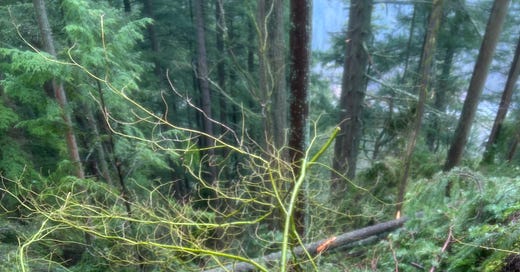



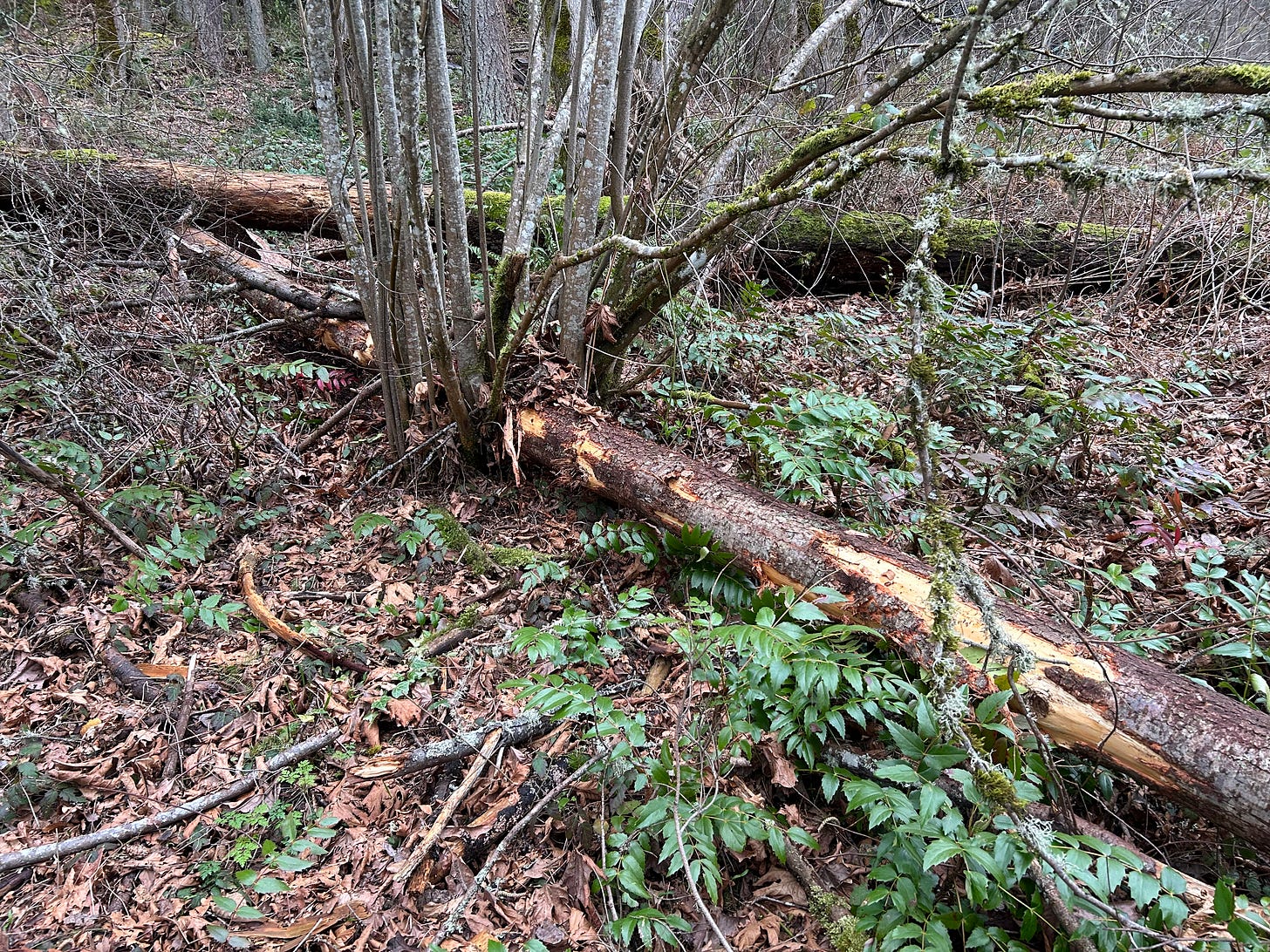
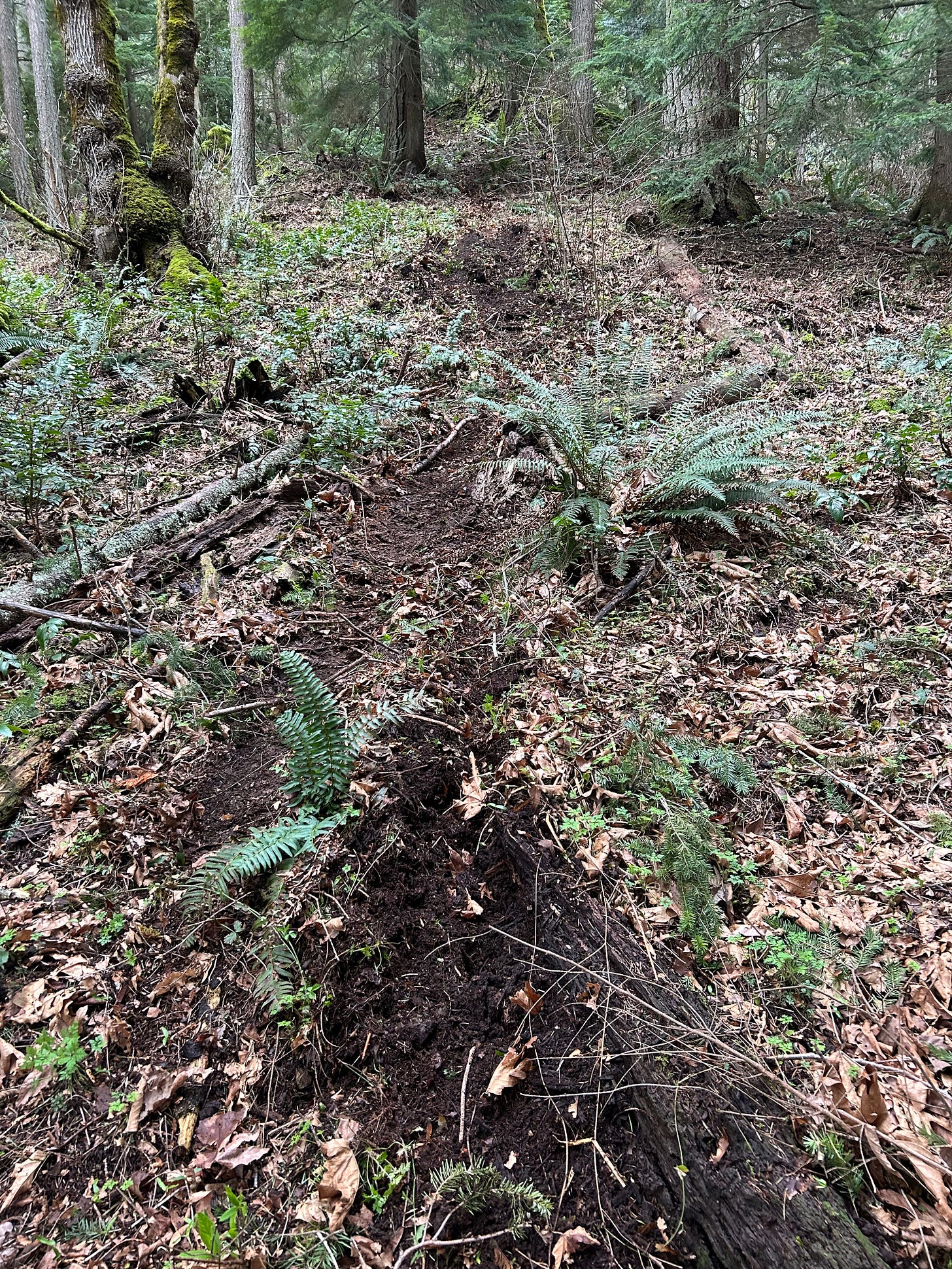
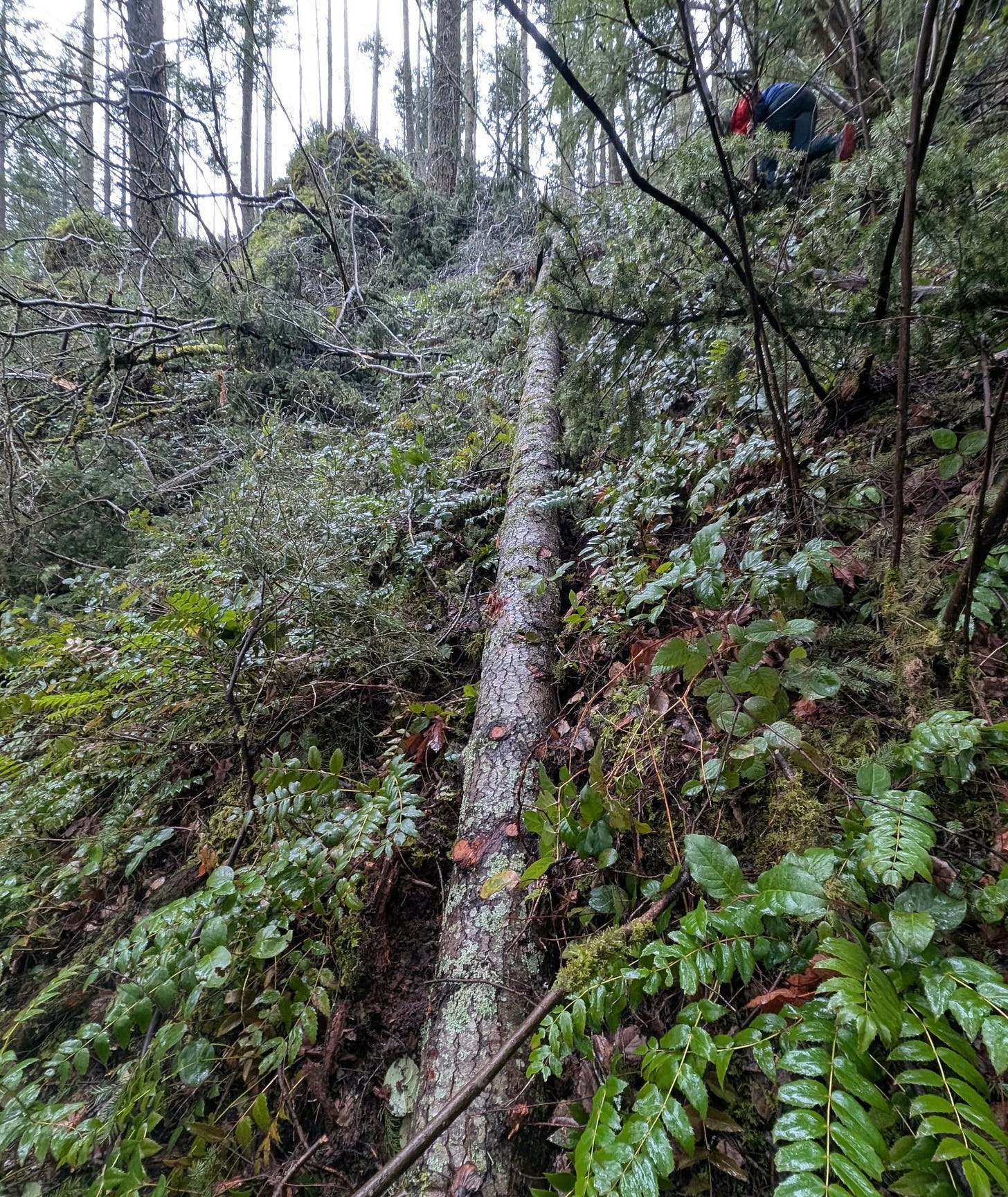

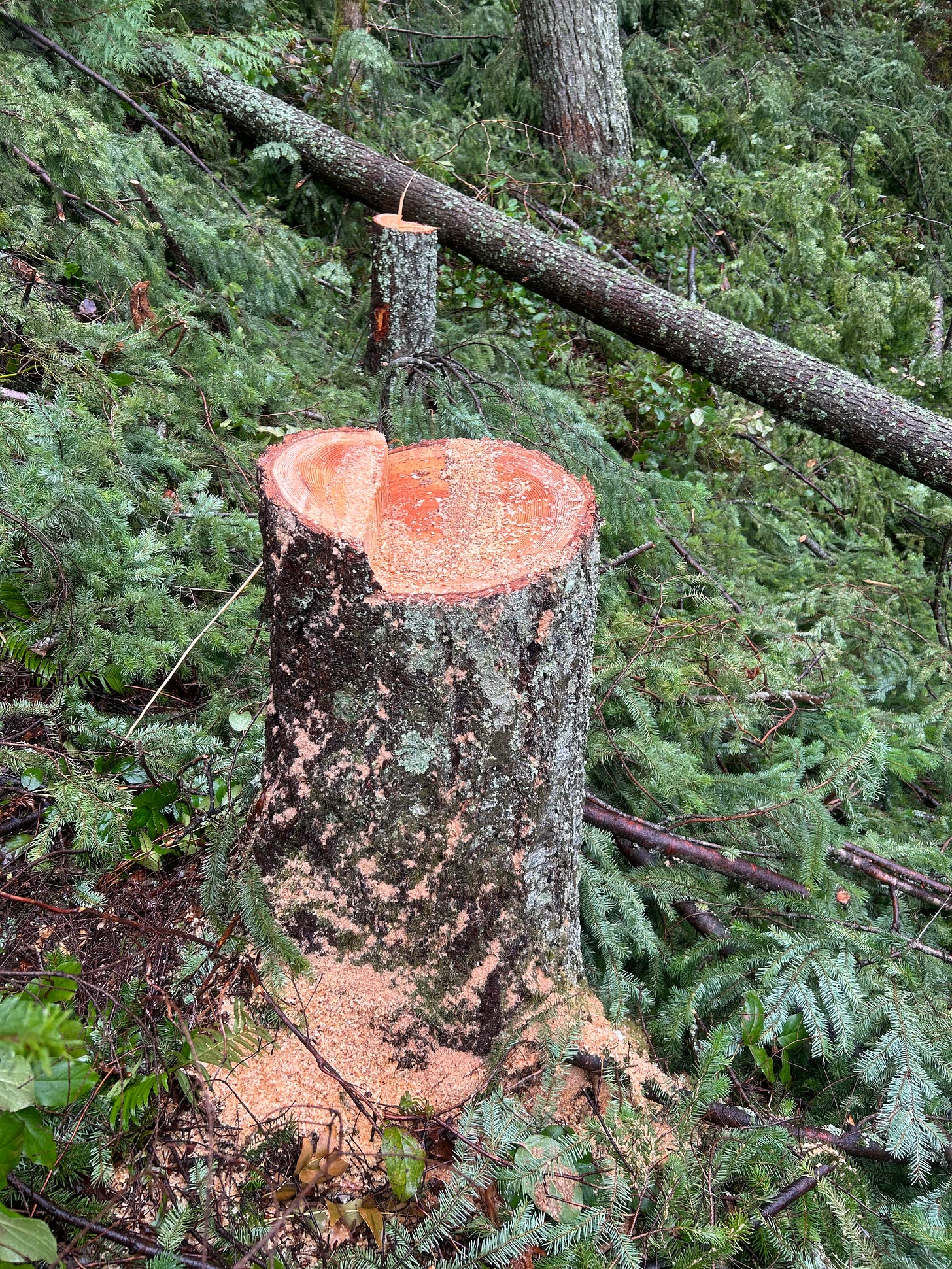
It is always aborist/worker fault not the people hiring them. I hope this will be investigated and consequences will be taken.
Unbelievable. The perp had to know they were not on their own property. Truly, unbelievable!